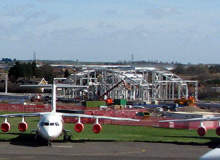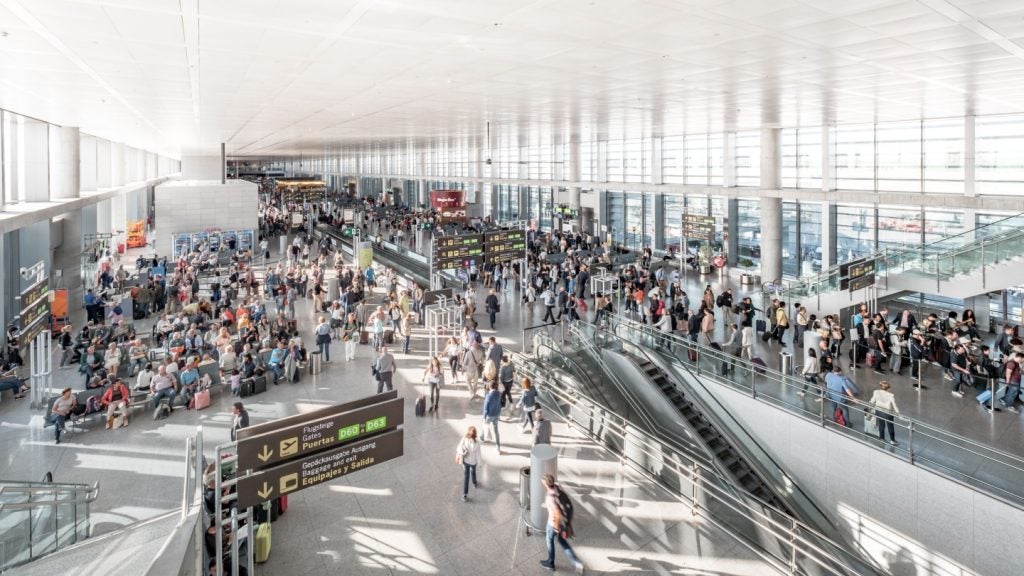
In March 2010, campaigners against plans for a third runway at London’s Heathrow Airport won a High Court battle that has forced the then UK Government to review its policy support for the expansion. Besides throwing what was the Labour Party’s flagship transport policy into disarray, the decision has aviation experts warning that the nation could suffer a shortfall in its long-term passenger capacity.
In the meantime, airports in and around London are continuing to prepare for the 2012 Olympic Games. The event is expected to see passenger capacity soar for several weeks between July and August of 2012, prompting many airports to now begin preparation for the sudden boom.
Both developments offer valuable opportunities to smaller regional airports in the south-east of England. With the likes of Heathrow, Gatwick and Stansted holding a monopoly on the London passenger market in recent years, the restricted growth of these sites is expected to eventually lead to saturation, allowing regional airports a potential future share of the international market. With this in mind, many airports have embarked on ambitious new expansion policies and are eyeing the Olympic visitor market as a means to begin significantly increasing passenger activity.
Heading south for the summer
A case in point is Southend Airport in the county of Essex. Despite being the third busiest airport in the UK during the 1970s, the influx of jet-engine aircraft and more stringent runway regulations quickly left Southend’s infrastructure lagging. As a result, it became a site for aviation maintenance and repair.
Hoping to resurrect the airport’s past, Southend’s management has recently embarked on a new expansion programme, which it hopes will eventually see the airport rival the likes of Stansted and Luton.
How well do you really know your competitors?
Access the most comprehensive Company Profiles on the market, powered by GlobalData. Save hours of research. Gain competitive edge.

Thank you!
Your download email will arrive shortly
Not ready to buy yet? Download a free sample
We are confident about the unique quality of our Company Profiles. However, we want you to make the most beneficial decision for your business, so we offer a free sample that you can download by submitting the below form
By GlobalDataOn 19 March 2010, Southend Airport received approval from the UK Government to extend its runway by 300m. Although the measurement appears small, its implications for the airport could prove big as it will eventually enable the site to handle larger aircraft such as the Airbus A319 and the Boeing 737.
Southend Airport was purchased by the Cumbrian-based Stobart Group in December 2008 and the company has since instigated a number of key developments to the airport’s infrastructure and transport links. According to Southend Airport’s head of business development Johnny Rayer, new rail connections will allow the site direct access to central London in 50 minutes.
“The new railway station, which will become operational this August, will give us connectivity to the heart of London at the same pace as the Stansted Express (the rail link that connects Stansted to Liverpool Street in London). The line runs from Southend to Liverpool Street via the Olympics Park in Stratford, so we have a real target to increase passenger activity in time for the 2012 games,” Rayer says.
“Meanwhile, the airport is constructing a new air traffic control tower, which is expected to be completed by February 2011. Earlier this year we also put out a tender for the design and construction of a new passenger terminal. We are hoping that both the terminal and runway extension will be completed together by the winter of 2011.”
With £18m being spent on the new terminal and runway extension and a further £12m being devoted to the new railway station, Southend Airport has the necessary financial backing even during this period of restrictive investment in the aviation market to move firmly forward in the UK market. Its management hopes to attract a balance of carriers to the airport and is currently examining the prospect of low-cost carriers and charter services.
“Obviously we will be seen in the shadows of London’s major airports such as Heathrow and Gatwick, but the rail links from Southend to the city [will be so good] that I believe there will be a strong opportunity to attract legacy carriers to the site,” says Rayer.
“In terms of the 2012 Olympic Games, we are looking towards private aircraft, as airports popular with the private market, such as Luton, currently have restrictive time slots. The London Olympic Committee is anticipating more than 200 heads of state will arrive in the city during the tournament and we have the apron space and first-class rail services into Stratford to support their arrival.”
Southend is also placing a strong emphasis on streamlining customs and immigration by becoming the first airport in the UK with a single point-of-entry agency. By combining customs and immigration together, it hopes passengers will be able to pass through passport control and immigration simultaneously, therefore reducing passenger processing times.
Likewise, the new passenger terminal and railway station have been designed symmetrically so that the period between a passenger arriving at the airport and departing by train is kept minimal. “Southend can be advantageous option for passengers over more prominent larger airports through its short passenger processing times and lack of congestion. During peak hours we will offer seven or eight trains per hour into Liverpool Street, while Stansted, for example, offers just four,” says Rayer.
City-to-city flying for the Olympics
As the only airport actually located in London, London City Airport has carved a strong niche in the business passenger market over the course of the past decade. Situated only two miles away from the Olympic Park and six miles from the City of London, the airport is undoubtedly in a strong position to capitalise on the Olympic visitor boom.
Supporting this notion is the extension of the Docklands Light Railway (DLR), which will become operational later this year. The new rail infrastructure will offer passengers a 10-minute journey on trains that operate every 10 minutes to and from the airport to Stratford. London City Airport’s chief executive Richard Gooding believes such connectivity will enable the airport to cater for a truly unique slice of the Olympic visitor market.
“I think the position of London City Airport will make it possible for visitors from the rest of the UK and nearer parts of Europe to make day trips to the Olympic Games. Hotel accommodation availability and pricing will play a strong factor in this decision, and so we anticipate there will be a high number of passengers arriving mid-morning and departing late at night,” says Gooding.
“Not only will we have the DLR connection to Stratford, but we are also within close proximity to other venues hosting Olympic events, such as the Excel Centre, the 02 venue, Greenwich and Woolwich.”
The single-run STOLport (short take-off and landing airport) currently serves more than 30 destinations in the UK, Ireland and Europe and is home to all three of the world’s major airline alliances – One World, Star and Sky Team – which typically operate 100-seater aircraft to and from the site. In September 2009, British Airways also began operating the airport’s first scheduled transatlantic flights to and from New York using a specially configured Airbus A318.
Four years ago, London City developed a master plan that targets raising capacity to eight million passengers per annum by 2030. Due to its location in the heart of the UK’s capital, the airport has stringent rules imposed to limit the noise impact from aircraft operations.
When it made a planning application to the London borough of Newham to increase the number of its flights from 80,000 to 120,000 a year by 2010, a residents’ campaign group called Fight the Flights objecting to the potential noise increase was quickly formed to oppose the move.
“The master plan was designed to be open with the local community about the airport’s growth in terms of capacity and throughput. It requires developing on the existing site and not infringing on its surrounding – it is about being a part of the community and facilitating local businesses as opposed to being its enemy,” Says Gooding.
“In the run-up to the 2012 Olympics we are redeveloping security facilities to streamline Olympic visitors. An additional floor is currently being added to the existing passenger terminal in order to achieve this.”
The £10m development is also designed to increase security at the airport, and its management is currently exploring the idea of installing full-body scanners. Gooding, however, is quick to identify that while such measures are beneficial for catering to the Olympic Games, they also have a much sharper eye on the future.
“Forecasts predict there will eventually be a shortage of airport capacity in London, which is great news for London City and other airports except Heathrow and Gatwick. There is no doubt that our target of eight million passengers by 2030 is, in fact, undershooting what the real demand will be,” says Gooding.
“There is simply not enough capacity in the London area to cope with the non-growth policy of Heathrow and with no alternative new airport in sight, the potential shortfall in passenger capacity should be a hotly discussed topic in the lead-up to the 2015 elections.”





